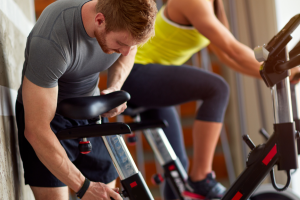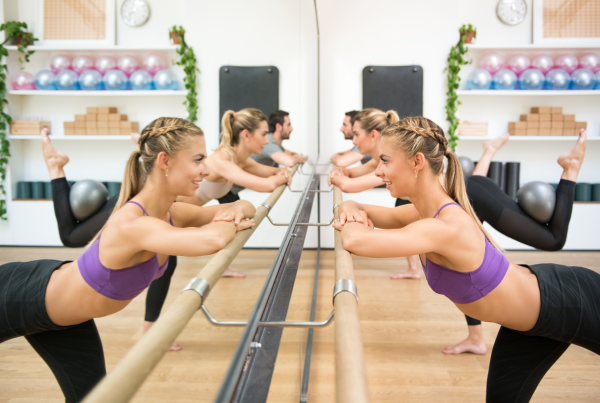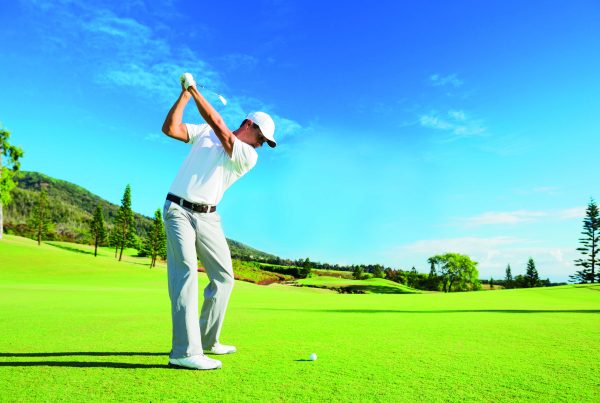Neil Troutman goes back to the start with indoor cycling, rediscovering essential skills and techniques to bring you five fundamentals of indoor cycling
When I first started teaching indoor cycling in 1996, the approach was straightforward – we were even drawing little shapes in boxes to guide the ride. Since then, indoor cycling has become a staple in gym schedules worldwide, growing in popularity and evolving many times over. However, during these years of tremendous growth, some essential skills and techniques seem to have faded from practice.
In the quest to deliver quick results, gain popularity or be influenced by peers, instructors may be tempted to overlook or abandon the basics, often perceiving them as too simple or boring. This can result in pushing riders beyond their abilities without proper coaching or explaining the purpose behind the workout. Such an approach carries long-term risks, including poor performance, injury and potentially alienating individuals who wish to attend the class. It is crucial to prioritise foundational skills, understanding that the basics are not merely a starting point, but a vital component of sustained growth and success.
Five fundamentals of indoor cycling we should focus on:
1. Bike set-up
A correct bike set-up is essential for both rider safety and optimising pedal stroke, which directly impacts the effectiveness of the workout. With the global rise of rhythm riding, where much of the class is spent standing (we’ll address this further later), saddle height seems to have lost its significance. However, if a rider needs to sit during the class, they should always return to a safe and proper position.
The ideal saddle height ensures that the rider’s leg is slightly bent, maintaining a 25-35° angle at the bottom of the pedal stroke. This slight bend maximises power output, reduces fatigue, lowers the risk of injury and – perhaps most importantly – improves comfort of the saddle (yes, it’s true!).
When the saddle is too low, the knees bend excessively, leading to discomfort and an increased risk of knee injuries. The reduced range of motion also decreases pedalling efficiency, leading to faster fatigue, poor posture and lower power output. Similarly, a saddle that is too high can lead to overextension of the legs, increasing the risk of hamstring and knee injuries, and causing strain on the Achilles’ tendons and calves. Riders may experience rocking hips, discomfort and lower back pain, all of which reduce pedalling efficiency.
Call to action: No matter how experienced your riders are, revisit bike set-up at the start of every class. Remind them that proper set-up is the key to a safe, effective and enjoyable ride.
2. The warm-up: Why it matters
The warm-up is often seen as an afterthought, rushed or skipped altogether due to time constraints. However, a proper warm-up is vital for any workout, especially in indoor cycling, where intensity can quickly ramp up. The purpose of a warm-up is to prepare the body for exercise by gradually increasing heart rate and muscle temperature, loosening up the joints, and engaging the muscles that will be used during the workout.
An ideal warm-up should last between five and 15 minutes, depending on the class’s intensity. For low-intensity classes, a five-minute warm-up is usually enough. However, for moderate- to high-intensity rides, a 10- to 15-minute warm-up that gradually builds in intensity is essential.
The benefits of a thorough warm-up include:
- Gradual increase in heart rate: Prepares the cardiovascular system for exercise and ensures better blood flow to muscles.
- Improved flexibility and mobility: Loosens up muscles and joints.
- Mental focus: Helps riders shift their focus to the workout ahead.
- Activation of the nervous system: Enhances co-ordination and overall movement efficiency.
- Increased muscle temperature: Research shows that even a slight increase in muscle temperature can improve performance by 2-5%. Warmer muscles are more elastic, and the body can work harder and more efficiently.
Call to action: Think back to the last time you spent a full 15 minutes warming up your class. If your warm-ups feel dull or rushed, incorporate fun drills or interactive elements to engage riders and ensure they get the benefits of a thorough warm-up.
But if you’re thinking, “Warm-ups are boring, what can I do to make them more engaging?”, stay tuned! Continue reading for tips on making warm-ups more fun and interactive.
3. Pedal technique: Refining the stroke
The warm-up is the perfect opportunity for riders to focus on refining their pedal technique. Indoor cycling isn’t just about moving your legs – understanding the different phases of the pedal stroke can greatly improve efficiency, power output and overall performance.
There are four phases in the pedal stroke:
- Power Phase (1-5 o’clock): This is where most of the force is applied, driving the pedal down.
- Pulling Phase (5-7 o’clock): The rider pulls through with the hamstrings to maintain momentum.
- Upstroke Phase (7-11 o’clock): The leg moves upward smoothly.
- Transition Phase (11-1 o’clock): Completing the cycle and transitioning back to the power phase.
Heel dropping vs toe pointing
Heel dropping
Dropping the heel during the pedal stroke has both pros and cons.
Benefits:
A subtle heel drop (5-10°) during the transition phase can help engage the glutes and hamstrings earlier in the stroke, leading to a more powerful and efficient pedal motion. This slight adjustment maximises muscle engagement and makes the stroke more effective.
Toe pointing
Riders should avoid pointing their toes during the pedal stroke, as it can diminish force application. Ideally, the ball of the foot should be pressing down on the pedal.
Call to action: Encourage riders to focus on technique during the warm-up, ensuring a smoother, more effective pedal stroke that enhances their overall performance.
Incorporate cadence drills into the warm-up as well to spice it up.
4. The purpose of the saddle: Why it matters
As noted in the bike set-up section, some indoor cycling classes rarely use the saddle, keeping riders out of the seat for most of the workout. However, the saddle exists for a reason, and it should never be removed from an indoor bike. While many riders may not enjoy spending time in the saddle, like any skill, this comfort can be developed with practice. So, why encourage your riders to stay seated, and when is standing on the pedals beneficial?
Advantages of riding in the saddle
- Efficiency: When seated, your bodyweight is supported by the bike, making it a more energy-efficient position. This helps to keep your heart rate lower, allowing you to manage longer efforts without burning out.
- Consistent power output: Remaining in the saddle allows for a more stable and consistent power output while pedalling.
Advantages of riding out of the saddle
- Increased force: Standing on the pedals lets your bodyweight generate extra force, engaging more muscles, including the quads, calves and upper body.
- Muscle relief: Coming out of the saddle provides a break for certain muscle groups.
Disadvantages of riding out of the saddle
While standing can make the workout feel more intense due to the higher energy expenditure, it comes with some significant drawbacks. The fixation on riding out of the saddle often stems from the belief that it makes classes harder, but this can lead to quicker fatigue and increased strain on vulnerable areas such as the knees, hips and lower back.
Asking riders to stand without sufficient resistance can result in overly fast leg movements, increasing the risk of strains, particularly in the knees and lower back.
Call to action: Challenge yourself to coach a class where your riders remain seated for the entire duration – unless they truly need a quick break. This will help develop their endurance, technique and comfort in the saddle, promoting a more balanced and effective ride.
5. Intensity: Finding the right balance
In the age of data-driven fitness, with heart rate (HR) monitors and power meters becoming increasingly common in indoor cycling, it’s easy to overlook the value of Rate of Perceived Exertion (RPE). However, not all riders have access to HR devices or know their Functional Threshold Power (FTP), especially if they’re new to cycling. Being able to communicate intensity in simple, relatable terms is still highly important.
RPE remains a crucial tool in guiding your class, helping riders understand when they should push harder or ease off. It also allows you to explain intensity in a way that’s accessible to everyone – whether they’re seasoned riders or beginners.
Not every workout needs to be intense1,2
There’s no need to make every ride a brutal, high-intensity session. Striving to be the hardest instructor can alienate riders, especially those just starting their fitness journey. These are the very people who could benefit most from consistent, manageable workouts. It’s important to remember that even moderate-intensity exercise provides significant health benefits and, sometimes, less is more.
In fact, the World Health Organisation recommends 150 to 300 minutes of exercise per week. Even lower doses of aerobic activity – around 50 minutes per week for sedentary individuals or those new to exercise – can dramatically improve cardiovascular health and fitness levels.
Moderate-intensity exercise: 150 minutes1,2
- Heart disease: 35-50% risk reduction
- Stroke: 30-50%
- Type 2 diabetes: Over 50%
- Breast cancer: 30-40%
- Colon cancer: 40-50%
- Hypertension: 30-40%
- Depression and anxiety: 40-50%
- Cognitive decline: 35-50%
- Obesity and metabolic syndrome: Over 50%
- Overall mortality: 30-40%
Moderate intensity is 50-70% of maximum heart rate, or a 5-6 on the RPE scale.
Call to action: Challenge yourself to deliver a 45-minute aerobic-focused class – no sprints, no high-intensity efforts – just steady, effective work that leaves your riders energised rather than exhausted
Conclusion
By grounding your classes in these five fundamentals of indoor cycling, you’ll improve your riders’ performance, keep them safe and help them stay motivated for the long haul.

Neil Troutman
Neil Troutman is a renowned indoor cycling specialist and the creator of Velocity Indoor Cycling Programme, which he launched successfully in both the UK and Australia. With over 30 years’ experience in the fitness industry and with more than 25 years being dedicated to Indoor Cycling, Neil has become an influential figure in the field. He has collaborated with some of the biggest names in Indoor Cycling.
Further reading
- https://www.gov.uk/government/publications/physical-activity-applying-all-our-health/physical-activity-applying-all-our-health, accessed 24 October 2024.
- https://www.ama-assn.org/delivering-care/public-health/massive-study-uncovers-how-much-exercise-needed-live-longer, accessed 24 October 2024.
Read more about the rise of indoor cycling on the FitPro blog








